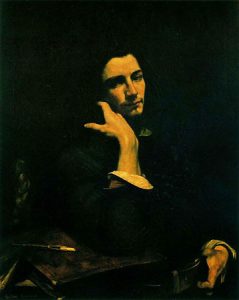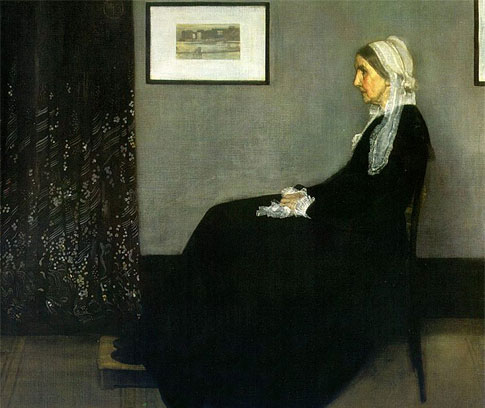Gustave Courbet – “son of revolution”
 The name Courbet means for the art of the XIX century no less than Rembrandt and Velázquez for the XVII century. After all, he openly proclaimed realism as his creative method, he was a member of the Paris Commune. The artist was always in the center of class battles, beginning with the revolution of 1848. Could he be out of it? Courbet did not lead the uprisings, but his works are inspired by those who participated in them – the people of labor. He began to depict them in the way that only gods, mythological heroes, and kings once represented. Everything was new to him. Art Courbet hated as soon as you can hate a rebel, or saw him as the banner of struggle for a better future. This is how his painting is perceived to this day. Bourgeois critics diminish the significance of the artist’s works, try to consign them to oblivion. Democratic authors emphasize his innovation.
The name Courbet means for the art of the XIX century no less than Rembrandt and Velázquez for the XVII century. After all, he openly proclaimed realism as his creative method, he was a member of the Paris Commune. The artist was always in the center of class battles, beginning with the revolution of 1848. Could he be out of it? Courbet did not lead the uprisings, but his works are inspired by those who participated in them – the people of labor. He began to depict them in the way that only gods, mythological heroes, and kings once represented. Everything was new to him. Art Courbet hated as soon as you can hate a rebel, or saw him as the banner of struggle for a better future. This is how his painting is perceived to this day. Bourgeois critics diminish the significance of the artist’s works, try to consign them to oblivion. Democratic authors emphasize his innovation.
Realism Courbet – a response to the revolutionary events of 1848. It is impossible to compare the canvases “Funeral in Ornan” and “The Stone Crushers” created by him in 1849–50 with romantic self-portraits and contrived compositions that he performed before 1848. Characteristically, contemporaries called the artist “the son of the revolution.” Yes, and he agreed with a similar opinion.
Democraticism Courbet brought up from childhood, with his family, among the people of the province of Franche-Comté, hardworking and honest. Through all his life, he carried love to his hometown of Ornan. Often returned there, wrote the neighborhood with powerful trees, arable land and vineyards, created portraits of residents. The grandfather of the Great French Revolution, the Jacobin, had a great influence on him. Gustave Courbet also took the ideas of his father, a liberal, supporter of the revolution of 1830.
Arriving in Paris, he read out books that set out the teachings of utopian socialists, considers himself their follower. In a late autobiographical note, the artist directly notes that for ten years, right up to the revolution of 1848, he advocated an active revolution. In the socialist newspaper “Human Rights” articles appeared under his signature. He was perceived by the native of Ornan and the ideas of the famous socialist Proudhon, the author of the acclaimed brochure “What is Property?”, Which he later became friends with. The battle poetry of Beranger, the novels of Balzac and George Sand had an impact on the mentality of the young man. The freedom-loving nature of the artist, the reluctance to reckon with the norms of bourgeois “decent” behavior created legends, about the “frantic provincial” talked everywhere. Cafe, where Courbet was among friends – the poet Charles Baudelaire, a critic of Chanflerie and others – was called the “temple of realism”.
February 22, 1848 in France was proclaimed a republic, which the artist passionately supported. Together with Baudelaire and Chanfleree, he participates in the publication of the newspaper Public Salvation, for which he makes a drawing representing the young standard-bearer on the barricade. At the same time he founded the socialist club. Courbet was destined to see how severely the July uprising was crushed by General Cavaignac. The painter is depressed by what he saw. Fearing persecution by the authorities, he leaves for Ornan.
The revolution contributed to the birth of the “new” Courbet. A “master from Ornan,” as they began to be called, appeared. He puts into practice the principles of realism he developed.
Rare performance distinguishes the artist. In a short time, a number of works have been created, three of which are destined for world fame: “Afternoon Rest in Ornan”, “Funeral in Ornan” and “Stone Crushers”. Their significance is not diminished even among such masterpieces of the French school as the “Oath of the Horatii” by David, “The Raft of the“ Medusa ”by Gericault and“ Freedom on the Barricades ”by Delacroix. Courbet inherits the great tradition of progressive art in France. In his quest, he relied on the achievements of outstanding masters of the past – Caravaggio, Rembrandt, Velázquez and Zurbaran. He developed a completely new style, which allowed him to say: “I am a Kurbetist!”
Here is the picture “Afternoon Rest in Ornan.” In the dark twilight of the kitchen, people sit around the dinner table and listen to the violinist. Dim light from the top window, invisible to the viewer, falls on a white tablecloth. The posture of the seated is free. The artist’s father, posing for this picture, is shown closer to the viewer, with a glass of wine in his hand. Opposite the author himself is located, next – a friend of his childhood. The son of a local organist plays the violin. In essence, the canvas is not only a genre scene, but also a group portrait. This is where the portrait mastery acquired by Courbet in Paris in the 1940s came in handy! The thing is executed very skillfully, the figures are skillfully fashioned by color. Particularly well distributed light and shadow, which minted plastic bodies. Courbet is close to an epic artistic language.
The painting was exhibited at the Salon of 1849, where it attracted widespread attention. Delacroix directly said about its author: “Innovator, revolutionary!”.



